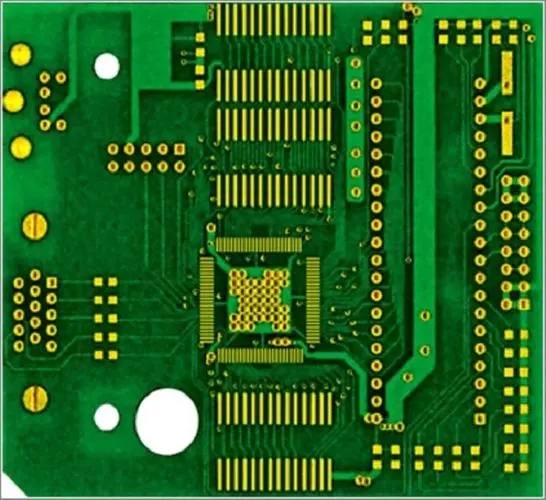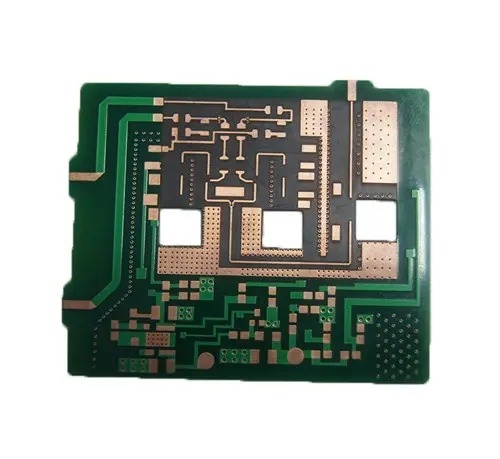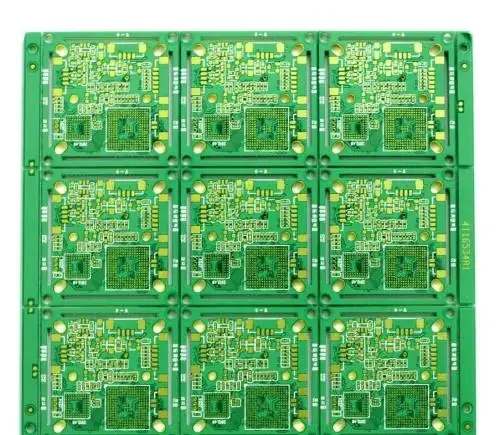
Summarize some points for attention in pcb board design
As an electronic engineer, circuit design is a necessary hard work, but no matter how perfect the principle design is, if the circuit board design is unreasonable, the performance will be greatly reduced, and even can not work normally in serious cases. Based on my experience, I summarized the following points that should be paid attention to in PCB design, hoping to enlighten you.
l. Make Physical Border
The closed physical frame is a basic platform for future component layout and routing, and also a constraint for automatic layout. Otherwise, the components coming from the schematic diagram will be at a loss. But you must pay attention to the accuracy here, otherwise you will have a lot of trouble in the future. Also, it is better to use arc at the corner, which can avoid sharp corner scratching workers on the one hand and reduce the stress effect on the other. In the past, one of my products was always broken in the process of transportation by a few machines. It would be better to use circular arc instead.
2. Introduction of components and networks
It should be easy to draw components and networks into the drawn border, but problems often occur here. Be careful to solve the problems one by one according to the prompted errors, otherwise it will take more effort later. The problems here are generally as follows:
The package form of the component cannot be found, the component network has problems, and there are unused components or pins. It is suggested that these problems can be solved quickly.
The layout and routing of components have a great impact on the life, stability and electromagnetic compatibility of products, which should be paid special attention to. Generally speaking, the following principles should be followed:
3. l Placing order
First place the components at fixed positions related to the structure, such as power sockets, indicator lights, switches, connectors, etc. After placing these components, use the LOCK function of the software to lock them, so that they will not be moved by mistake in the future. Then place special components and large components on the circuit, such as heating components, transformers, ICs, etc. Finally, place the small device.
3.2 Pay attention to heat dissipation
Special attention shall be paid to heat dissipation in component layout. For high-power circuits, those heating elements such as power tubes and transformers should be placed as far away as possible to facilitate heat emission. They should not be concentrated in one place, nor should high capacitors be too close to avoid premature aging of electrolyte.

4. Wiring
Wiring principle
The knowledge of routing is very profound, and everyone will have their own experience, but there are still some general principles.
◆ When wiring two panels, the conductors on both sides should be perpendicular, oblique, or bent to avoid parallel to each other to reduce parasitic coupling; The printed wires used for the input and output of the circuit shall be kept away from adjacent parallels as far as possible to avoid feedback. It is better to add grounding wires between these wires.
◆ The wiring corner shall be greater than 90 ° as far as possible, and no corner below 90 ° shall be allowed, and 90 ° corner shall be used as little as possible
◆ For the same address line or data line, the difference of routing length should not be too large, otherwise the short line part should be compensated by manual routing
◆ The high frequency digital circuit should be thinner and shorter
◆ Large current signals, high voltage signals and small signals should be isolated (the isolation distance is related to the withstand voltage to be borne. Generally, the distance on the board should be 2mm at 2KV, and it should be increased in proportion. For example, if the 3KV withstand voltage test is to be carried out, the distance between high and low voltage lines should be more than 3.5mm. In many cases, in order to avoid creepage, slots are also opened between high and low voltage on the printed circuit board.)
◆ Try to route on the welding surface, especially PCB with through-hole process
◆ Minimize the use of vias
◆ The single panel pad must be large, and the wire connected to the pad must be thick. Tears can be shed when they can. The quality of general single panel manufacturers is not very good, otherwise there will be problems with welding and RE-WORK
◆ Large area copper coating shall be grid shaped to prevent bubbles and bending of the plate due to thermal stress during wave welding. However, in special cases, the flow direction and size of GND shall be considered. It is not easy to fill the matter with copper foil, but it is necessary to route
◆ Components and wiring should not be placed too close to the edge. Generally, single panels are mostly paper boards, which are easy to break after being stressed. Connecting or placing components at the edge will be affected
◆ The convenience of production, commissioning and maintenance must be considered
It is very important for analog circuits to deal with the problem of ground. It is often difficult to predict the noise generated on the ground, but once it is generated, it will bring great trouble. It should not rain. For the power amplifier circuit, the extremely small ground noise will have a significant impact on the sound quality due to the amplification of the subsequent stage; In a high-precision A/D conversion circuit, if there is a high frequency component on the ground wire, it will produce a certain temperature drift, which will affect the operation of the amplifier. At this time, a decoupling capacitor can be added at the four corners of the board. One leg is connected to the ground on the board, and the other leg is connected to the mounting hole (connected to the housing by screws). In this way, this component can be eliminated, and the amplifier and AD will be stable.
In addition, the issue of electromagnetic compatibility is more important under the circumstance that people pay more attention to environmental protection products. Generally speaking, there are three sources of electromagnetic signals: signal source, radiation and transmission line. Crystal oscillator is a common high-frequency signal source. In the power spectrum, the harmonic energy value of crystal oscillator will be significantly higher than the average value. The feasible method is to control the amplitude of the signal, ground the crystal case, shield the interference signal, and use special filter circuits and devices.
It should be noted that serpentine wiring has different functions because of different applications. It is used in some clock signals such as PCIClk and AGP Clk on the main board of the computer. It has two functions: 1. impedance matching; 2. filter inductance.
For some important signals, such as the HUBLink in INTELHUB architecture, there are a total of 13 HUBLinks, and the frequency can reach 233MHz. They must be strictly equal in length to eliminate the hidden danger caused by time delay. At this time, serpentine routing is the only solution.
Generally speaking, the line spacing of serpentine routing >= 2 times the line width; If in the ordinary PCB board, in addition to the role of filter inductance, it can also be used as the inductance coil of the radio antenna.
5. Adjust and improve
After the wiring is completed, it is necessary to make some adjustments to the text, individual components, wiring and copper coating (this work should not be done too early, or it will affect the speed and cause trouble to the wiring), also for the convenience of production, debugging and maintenance.
Copper coating usually refers to filling the blank area left after wiring with a large area of copper foil. You can lay GND copper foil or VCC copper foil (but in this way, once the short circuit is easy to burn the device, it is better to ground, unless it must not be used to increase the conduction area of the power supply, so as to withstand a large current before connecting to VCC). Encapsulation usually refers to wrapping a handful of signal wires with special requirements with two ground wires (TRAC) to prevent them from being interfered or interfered by others.
If copper coating is used to replace the ground wire, attention must be paid to whether the whole ground is connected, whether there are special requirements for the flow direction of large current, to ensure that unnecessary errors are reduced.
6. Check the network
Sometimes the network relationship of the drawn board is different from the schematic diagram due to misoperation or negligence, so it is necessary to check. Therefore, after painting, you must not rush to hand over to the plate manufacturer. You should check it first, and then carry out the follow-up work. The Circuit board assembly, circuit board design, and circuit board processing manufacturers explain and summarize some points that should be noted in the design of pcb circuit boards






